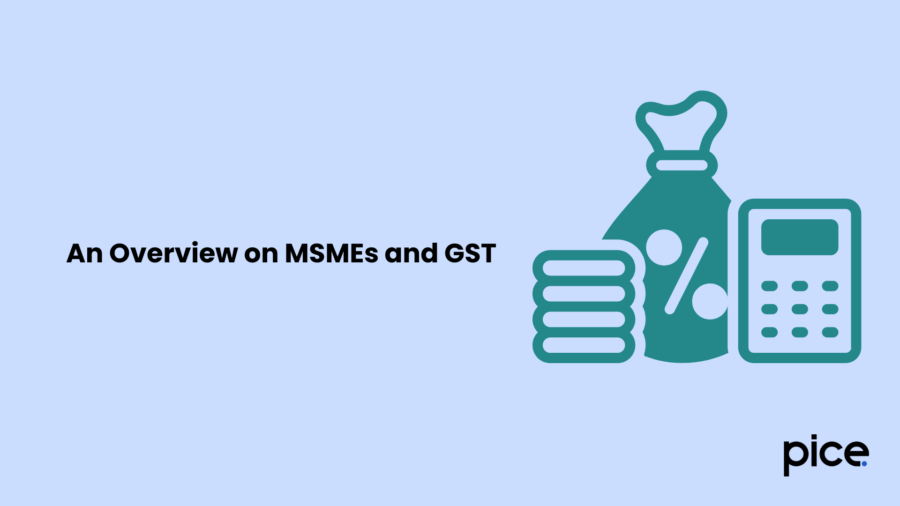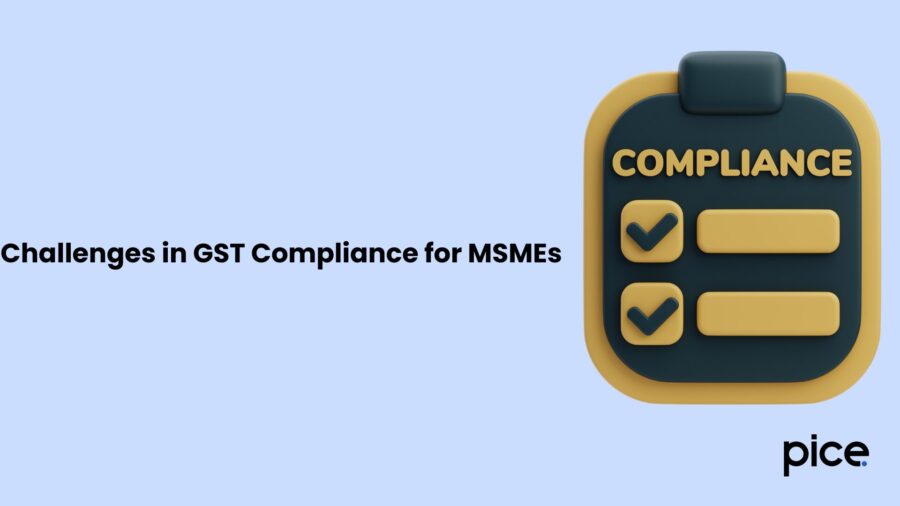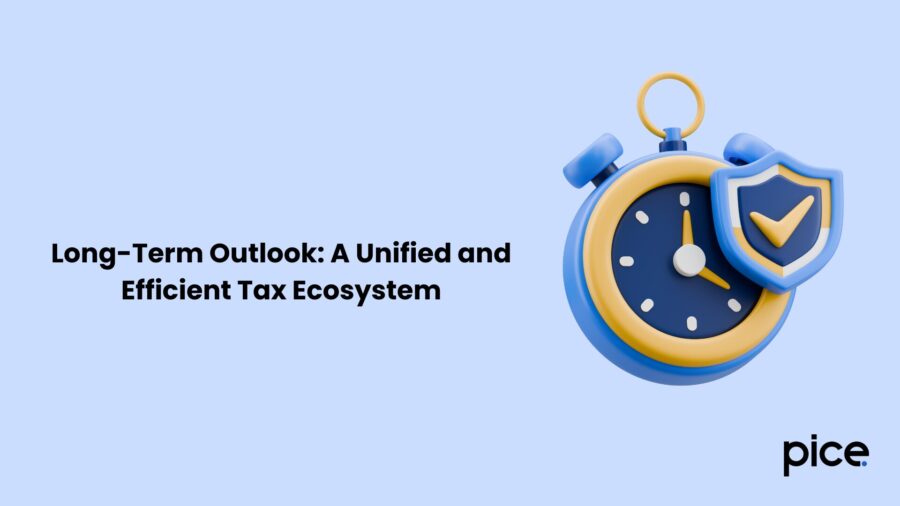Impact of GST on MSMEs in India: Key Benefits and Challenges
- 24 Jun 25
- 9 mins

Impact of GST on MSMEs in India: Key Benefits and Challenges
Key Takeaways
- GST unified India's indirect tax system, simplifying compliance but raising digital and operational burdens for MSMEs.
- Increased formalization under GST helped MSMEs access credit and digitize vendor transactions.
- Compliance costs, digital infrastructure needs, and refund delays remain major hurdles for small businesses.
- Government schemes like QRMP and composition schemes offer relief but have limited applicability.
- In the long run, GST aims to streamline supply chains and create a robust, integrated business ecosystem for MSMEs.
The introduction of the Goods and Services Tax or GST returns in India, brought a transformational shift in the taxation system of the country. For Micro, Small, and Medium Enterprises (MSMEs), the backbone of the Indian economy, this new regime brought a mix of benefits and challenges. While it simplified indirect taxation and opened the doors to a unified market, it also introduced new compliance requirements, creating hurdles for many small business owners.
This article explores the detailed impact of GST on MSMEs in India, covering both the positive and negative implications. It also highlights government initiatives, sector-specific challenges, and long-term projections, with a special focus on compliance and operational realities.
An Overview on MSMEs and GST

MSMEs are classified based on their investment and annual turnover, as follows:
| Factors | Micro | Small | Medium |
| Investment | Not more than ₹2.5 crore | Not more than ₹25 crore | Not more than ₹125 crore |
| Annual Turnover | Not more than ₹10 crore | Not more than ₹100 crore | Not more than ₹500 crore |
These enterprises play a vital role in India's industrial output, exports, and employment generation. Under the current tax regime, GST replaced several indirect taxes such as VAT, excise duty, and service tax, streamlining the tax system and creating a common market.
Positive Impact of GST on MSMEs
Following are some positive impacts of GST implementation of MSME businesses:
- Increased Compliance Requirements
Regular filing of returns forms or quarterly returns has now become mandatory on the MSMEs depending upon their own schemes. The maintenance of digital records, adherence to compliance rating criteria, and generation of E-Way Bills are issues that have multiplied upon with the increased burden of compliance. Small businesses with limited resources generally face tough challenges when it comes to such compliance.
- High Registration and Maintenance Costs
The registered cost of GST would be mediating, yet the value that comes along with setting up a digital platform, hiring consultants, and having accounting professionals is making such a compliance, which is high in essence. The use of ERP e-TDS return filing or GST software is a must, but not all MSMEs are capable of purchasing it.
- Cash Flow Disruptions
Delay in granting refunds from GST rightfully ranks as the gravest handicap. For exporters, the cash-back refund has become detrimental to the affairs of exporters because GST refunds on exports are delayed inordinately. Usually, refunds would be on time; but, with the delay, MSMEs will suffer drastically since these are cash-starved units, with wrapped margins for every product line.
The unreliability in undelivered refunds on time erodes liquidity for operational and managerial expenses, leading to procurement of raw materials for production, or reinvestment cycle that further erodes additional costs in compliance.
- Technology Dependence and Digital Divide
The digital-first approach of GST creates difficulties for MSMEs in semi-urban and rural areas with limited internet access. The digital divide makes digital compliances challenging, particularly for sectors like handicrafts, where artisans often lack the resources to handle business compliances and tech requirements.
- Increased Transparency and Formalisation
GST promotes formality in business operations by requiring structured documentation and return filing. This has led to the registration of numerous unregistered MSMEs into the formal economy, facilitating access to credit and enabling them to make vendor payments and transact on digital platforms. The interconnected finance ecosystem further enhances operational efficiency while instilling confidence among stakeholders.
Example: Textile Industry
One of the primary advantages of GST registration is that the introduction of GST provided development opportunities to the textile industry. The impact of GST on MSME in these industries was mostly positive after they adjusted to the sudden shift.It reduced manufacturing costs and made Input Tax Credit on capital goods possible, which added to business growth. Moreover, the export of the textile industry was also boosted due to GST, as it replaced the duty drawback schemes.
Challenges in GST Compliance for MSMEs

Despite its benefits, GST has introduced several complexities for MSMEs:
- Increased Compliance Requirements
MSMEs are now required to file monthly return forms or quarterly returns, depending on their scheme. Maintaining digital records, adhering to compliance rating criteria, and generating E-Way Bills has increased the burden of compliance. Small firms with limited resources often struggle with such compliance hurdles.
- High Registration and Maintenance Costs
The registration cost under GST may seem minimal, but the need for digital infrastructure, consultants, and accounting staff leads to a higher compliance cost. Adopting an ERP e-TDS return filing solution or GST software is essential, but not all MSMEs can afford it.
- Cash Flow Disruptions
One significant downside is the delay in GST refunds, especially for exporters. Since MSMEs typically operate on tight margins, delayed refunds affect liquidity, salaries, procurement, and reinvestment cycles, adding to the additional compliance cost.
- Technology Dependence and Digital Divide
The digital-first approach of GST creates difficulties for MSMEs in semi-urban and rural areas with limited internet access. The digital divide makes digital compliances challenging, particularly for sectors like handicrafts, where artisans often lack the resources to handle compliance policies and tech requirements.
- Challenges for MSMEs Under Composition Scheme
The composition scheme offers lower tax rates and minimal compliance, but it comes with limitations, such as the inability to claim ITC or engage in interstate sales. A composition dealer may lose out on input credit advantages, reducing competitiveness in the broader supply chain.
Sector-Specific Example: Handicrafts & Textiles
- Textiles: GST allowed textile MSMEs to claim ITC on capital goods and streamline operations. It lowered manufacturing costs and increased their global competitiveness through zero-rated supplies.
- Handicrafts: With 59.6% of handicraft artisans in rural areas, the GST regime posed challenges in GST compliance, particularly due to low digital literacy and poor access to infrastructure.
Government Initiatives to Support MSMEs Under GST
To ease the transition and support MSMEs, the government has introduced the following measures:
- Threshold Turnover Exemptions: MSMEs with turnover below ₹40 lakh (goods) and ₹20 lakh (services) are exempt from mandatory GST registration in most states.
- Composition Scheme Benefits: MSMEs with annual turnover up to ₹1.5 crore can opt for this scheme, reducing tax and reporting burdens.
- Quarterly Basis Filing Option: Eligible MSMEs can opt for quarterly returns under the QRMP scheme, easing monthly basis compliance stress.
- Training and Awareness: The government, through the Ministry of MSME and GSTN, conducts workshops, webinars, and campaigns to enhance understanding of tax compliance, direct tax compliance, and secretarial compliance.
- Ease for MSMEs via Portal Enhancements: Regular updates to the GST portal aim to minimise compliance requirements and enhance user experience.
Long-Term Outlook: A Unified and Efficient Tax Ecosystem

In the long run, GST is expected to create a complete supply chain solution that integrates manufacturers, wholesalers, and retailers into a seamless tax and business activities framework. The following long-term benefits are anticipated:
- Lower Tax Burden through optimised ITC.
- A stronger ecosystem for process automation in compliance and finance.
- Fewer tax disputes and easier audits with digital records.
- Enhanced economic growth through improved logistics and simplified tax rules.
- A more inclusive system that encourages the migration of unregistered MSMEs into formal networks.
Conclusion
The impact of GST on MSMEs is both positive and challenging. It has simplified taxation and created a unified market but increased compliance burdens and digital hurdles. For MSMEs to thrive and support India’s economic growth, ongoing reforms are crucial, such as smoother refund processes, reduced tech challenges, and awareness of GST registration benefits.
Embracing digital tools, easing vendor payments, and lowering the compliance burden can help MSMEs fully leverage the current tax regime and flourish in a connected finance ecosystem, ultimately contributing to a more inclusive and resilient Indian economy.
💡If you want to streamline your invoices and make payments via credit or debit card or UPI, consider using the PICE App. Explore the PICE App today and take your business to new heights.


















